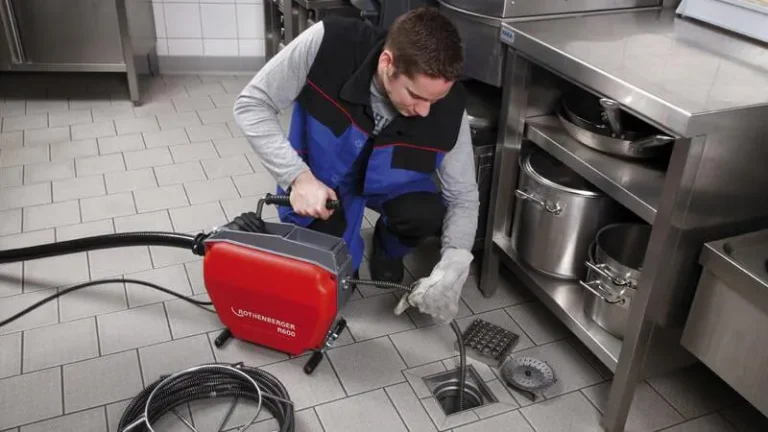
Understanding the Level 6 NVQ Diploma in Occupational Health and Safety
Overview of the Qualification
The Level 6 NVQ Diploma in Occupational Health and Safety is a recognized qualification aimed at professionals who are looking to advance their careers in health and safety management. This qualification is designed for individuals already working in health and safety roles, enabling them to develop their skills and knowledge in managing risks and ensuring compliance with health and safety regulations. The coursework covers various aspects of health and safety practices, risk assessments, and organizational health and safety strategies, providing participants with the tools necessary to foster a safe work environment.
Significance in Professional Development
Achieving the Level 6 NVQ Diploma is significant for career advancement, as it equips professionals with in-depth knowledge and practical skills that are highly valued in the workplace. This qualification not only enhances one’s resume but also leads to enhanced job performance and the potential for higher earning opportunities. Employers often prefer candidates with a Level 6 qualification because it demonstrates a commitment to professional development and an understanding of the complexities of health and safety management.
Structure of the Diploma
The Level 6 NVQ Diploma consists of several mandatory and optional units, each designed to build specific competencies. Typically, participants must complete various assignments that require practical evidence of their ability to implement health and safety practices in real-world scenarios. The units often cover areas such as risk management, health and safety legislation, and the development of safety and health policies. Participants can usually expect to complete a combination of projects, reports, and professional discussions to satisfy the assessment criteria.
Essential Assignments for Level 6 NVQ
Core Units and Their Requirements
The core units of the Level 6 NVQ Diploma typically address the essential areas of health and safety management. These units might include:
- Health and Safety Management Systems: Understanding the framework within which health and safety policies operate.
- Risk Assessment: Conducting and evaluating risk assessments for various workplace scenarios.
- Health and Safety Legislation: Familiarizing oneself with relevant laws and regulations.
- Organizational Culture and Communication: Promoting health and safety through effective communication and fostering a positive organizational culture.
Each unit has specific assessment criteria, and completing assignments accurately is vital for achieving course credits. Participants may be required to produce detailed reports, create presentations, or engage in collaborative projects illustrating their competency.
Common Challenges in Completing Assignments
Completing assignments for the Level 6 Diploma can present various challenges. One common difficulty is understanding the detailed requirements of each unit, especially when it comes to interpreting assessment criteria. Additionally, many candidates struggle with managing their time effectively, often balancing work commitments alongside their studies. Others may find it challenging to gather sufficient evidence to support their assignments, leading to stress and uncertainty about their submissions.
Resources Available for Assistance
Fortunately, there are numerous resources available to aid candidates in successfully completing their assignments. Many educational institutions offer support services, including mentorship from qualified professionals, library access, and study materials. Additionally, online forums and study groups can help facilitate discussion and collaborative learning. For specific examples and guidelines, many find it beneficial to refer to materials published in PDFs or guides related to the level 6 nvq diploma in occupational health and safety – completed assignments pdf.
Guidelines for Completing Assignments
Effective Research Techniques
Successful assignments begin with effective research techniques. Candidates should utilize a variety of sources, including academic journals, industry publications, and official government health and safety guidelines. It’s crucial to ensure that sources are credible and up-to-date, as the field of occupational health and safety continuously evolves. Additionally, systematic note-taking and the creation of an annotated bibliography can help ensure that relevant information is easily accessible during the writing process.
Best Practices for Documentation
Documentation is a critical component of the assignment process. Candidates must adhere to specific formatting and citation guidelines as outlined in their course materials. Utilizing referencing software can streamline this process, ensuring that all sources are credited correctly. Furthermore, maintaining clear and concise writing that aligns with academic standards will enhance the overall quality of assignments.
Time Management Strategies
To mitigate the challenges associated with balancing work and study, effective time management strategies are key. Candidates should create a schedule that allocates specific time slots for studying, assignment completion, and revision. Tools such as digital calendars and task management apps can help in tracking deadlines and milestones. Setting achievable goals is essential, allowing for a structured and manageable approach to the coursework.
Assessment Criteria for Level 6 NVQ
Key Performance Indicators
The assessment criteria for the Level 6 NVQ Diploma focus on several key performance indicators (KPIs) that reflect a candidate’s competency in health and safety practices. These KPIs include the ability to analyze complex issues, implement effective health and safety solutions, and demonstrate leadership in promoting a culture of safety within an organization. Understanding these indicators can guide candidates in aligning their assignments with the expected outcomes.
Types of Assessments You’ll Face
Candidates can expect to encounter various types of assessments throughout the course. Common assessment formats include:
- Written Reports: Detailed analyses of health and safety issues and the application of laws and policies.
- Practical Demonstrations: Showing competency in risk assessments and health and safety audits.
- Professional Discussions: Engaging in dialogue with assessors regarding health and safety management practices and decision-making.
Feedback and Improvement Cycles
Receiving constructive feedback is essential for candidates as it highlights areas of strength and opportunities for improvement. Candidates should actively seek feedback from assessors and peers, using it to refine their assignments and enhance their understanding of the subject matter. Implementing changes based on feedback can significantly impact performance, leading to better outcomes in subsequent assessments.
Final Steps to Achieving Your Diploma
Preparing for Final Assessment
As candidates approach their final assessments, thorough preparation is crucial. This preparation may include revisiting all previously submitted assignments, ensuring that understanding of all units is solid and identifying any areas that still require clarification or additional study. Mock assessments can also be beneficial, providing an opportunity to practice under exam conditions.
Using Past Assignments as Templates
Leveraging past assignments as templates can offer invaluable insights into effective structuring and presentation. Candidates can analyze successful submissions to understand how to frame arguments, present evidence, and adhere to academic standards. However, it’s essential to maintain originality in all submissions to avoid any issues related to plagiarism.
Next Steps After Completion
Upon successful completion of the Level 6 NVQ Diploma, candidates can further advance their careers through continuous professional development. This might include pursuing higher-level qualifications, engaging in specialized training, or obtaining certifications from recognized bodies in health and safety. Networking through professional associations can also open doors to new opportunities and enhance career prospects in health and safety management.






